From that first sizzle on the grill to the satisfying final bite, nothing beats a perfectly cooked hamburger.
For a foolproof, safety-first approach, the USDA suggests 160°F for a burger’s internal temperature. But if you’re craving a medium-cooked burger just like I do, you have options. Let our hamburger temp chart help you find your perfect doneness.
Jump to Section
Our Hamburger Temperature Chart
| Burger Doneness | Internal Temp | Average Grill Time |
| RARE | 120°-125°F | 3-4 minutes |
| MEDIUM-RARE | 130-135°F | 6 minutes |
| MEDIUM | 140-145°F | 7-8 minutes |
| MEDIUM-WELL | 150-155°F | 9 minutes |
| WELL-DONE | 160-165°F | 10 minutes |
Feel free to save or print our free burger temperature chart seen below:
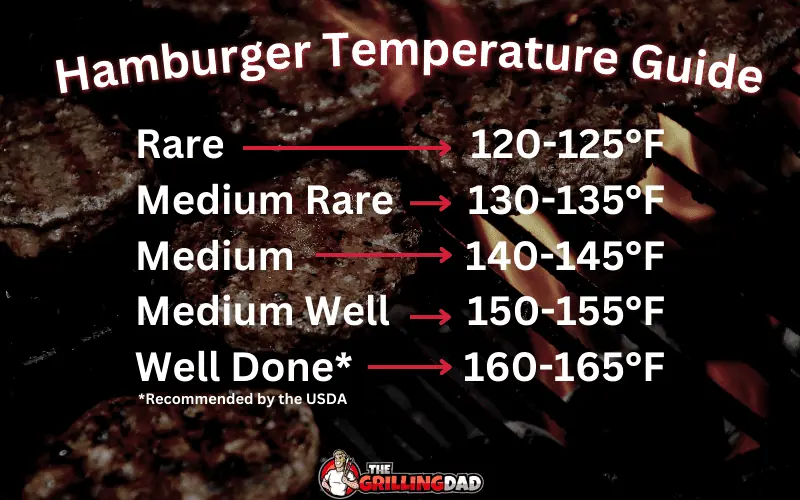
If you prefer burgers less than well done, you should purchase a higher quality of beef and then grind the meat yourself to keep you and your family safe. If you have a butcher that features locally-grown beef, check it out. You can also check out our Snake River Farms review to see why we trust their burgers.
Be aware that while this is safer, it doesn’t guarantee 100% safety from the foodborne illnesses commonly found in ground meat.
Here are the hamburger temperature guidelines for cooking those patties to perfection according to your personal preferences:
Well-Done Burger Temp
Well-done cooked burgers cook to an internal temperature of 160℉-165℉.
This temperature follows the USDA guidelines for beef that is purchased prepackaged. Hamburgers at this temperature usually have a tough texture and can be drier than others.
On average, it takes about 10 minutes to grill well-done burgers.
Medium-Well Burger Temp
A medium-well burger cooks to an internal temperature of 150℉-155℉.
Although this is slightly lower than the recommended temperature, it is still safer than others.
The texture of hamburgers at this temperature typically is drier on the outside and may have some pink on the inside.
It takes about 9 minutes to grill medium-well burgers.
Medium Burger Temp
A medium hamburger cooks to an internal temperature of 140℉-145℉.
Again lower than USDA recommendations, but tends to be one of the most popular. This is because the inside usually has a slight pink tinge which means that it will be juicier to taste.
This is how I like my burgers. And it takes 7-8 minutes on the grill to get medium burgers.
Medium-Rare Burger Temp
Medium-rare burgers cook to an internal temperature of 130℉-135℉.
Cooking to this temperature puts you at a higher risk of food poisoning. If proper precautions are taken, such as grinding your meat, this can be considered perfectly safe.
On average, it takes 3-4 minutes to grill medium-rare burgers.
Rare Burger Temp
A rare burger cooks to an internal temperature of 120℉-125℉.
Cooking to this temperature is never recommended since it puts you at a higher risk of food poisoning. This is because enough heat has not been distributed to successfully eliminate harmful bacteria. Plus, burgers aren’t that great when they are completely rare.
While I wouldn’t eat them this way, rare burgers are done after about 3-4 minutes of grilling.
Related >> What is blue rare steak?
Most people have their personal preferences when it comes to the doneness of their hamburger patties. While some people (me included) prefer their burgers to be medium, others would rather them be cooked well-done.
Although people often have their preferences, various recommendations are in place to protect you from food poisoning down the road. Depending on the type of meat you are using, these hamburger temp guidelines can vary.
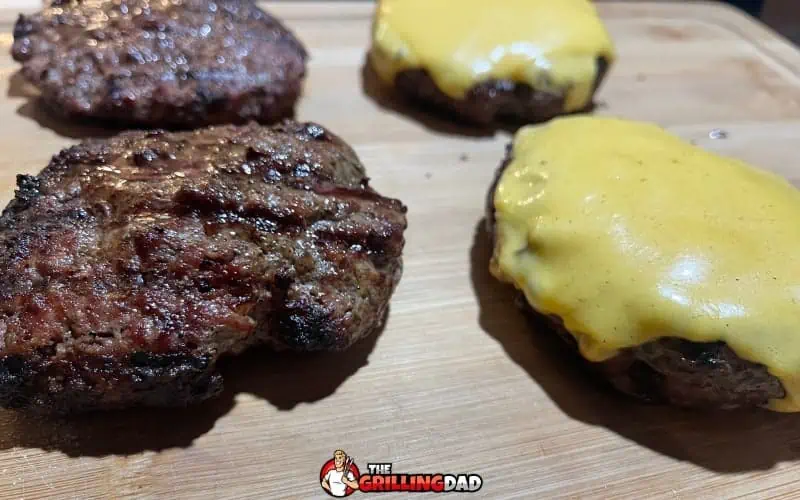
USDA’s Hamburger Temperature Guidelines
Now, you may be asking, “Why are we getting so serious about burgers?” Well, sit back, grab a burger, and let’s have a chat about some ground rules (pun very much intended).
The USDA, which is like the sheriff of the food world, has some guidelines about burger temperatures. They’re not just trying to spoil our BBQ fun – they’re serious about keeping us safe from uninvited guests like foodborne illnesses.
- Ground beef burgers? They need to hit a steamy 160°F/71°C. That’s “well-done” in beef language
- Ground turkey or chicken burgers are a bit more finicky. They like it a touch hotter at 165°F/74°C. They’re just extra like that.
- The kiddos and our more seasoned crowd (the elderly) are more likely to catch a case of foodborne blues, so take extra care with their burgers.
- After you’ve used your trusty meat thermometer, give it a good scrub with hot soapy water.
- Let your burgers rest for about 3 minutes after they’re off the heat.
Why Hamburger Temp Has To Be Higher Than Other Beef Cuts
Many people question why ground beef has a recommendation of a higher temperature than steak and other beef cuts. The bacteria does not penetrate steak the way it does with ground meat.
The reason for this is that with steak, the bacteria are often found on the surface of the meat and typically do not affect the inside. With ground beef, however, the grinding process can distribute the bacteria throughout the meat.
Related >> Best Meat Grinders
It is because of this that it is recommended that you cook your hamburger temperature to 160℉. Using a food thermometer can help to save you and your guests from any harmful bacteria that are found within the meat.
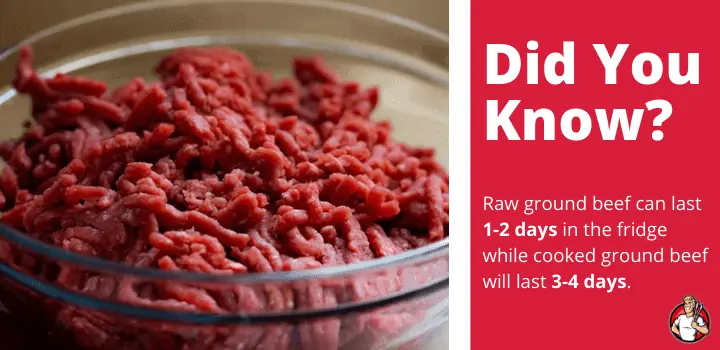
Risks of Under-Cooking Ground Meat
Ground beef tends to be at a higher risk of contamination than most other cuts of beef since the source can be from multiple animals. This is especially true when it comes to prepackaged meat that you purchase at a grocery store.
Since pre-packaged ground meat is mass-produced, you cannot be sure that all of your packages are coming from the same animal. Because of this, you can get beef that comes from both healthy animals and those that carry more bacteria than others.
If the ground beef comes from even a small percentage of a cow that has been contaminated, because of the grinding process, the bacteria are distributed to the rest of the batch. This is typical because all of the beef in a factory goes through a specific grinder that is also used on other meats.
When contaminated meat is mixed with healthy meat it can cause the distribution of harmful bacteria to grow. This means that the ground meat you purchase that is prepackaged may not be as pure and free of contaminants as you would expect.
How To Check Burger Patties Temp
A meat thermometer is the best, most reliable way to check the internal temp of burgers, but there is another way if you’re in a pinch.
Meat Thermometer Method
The most accurate way to check your burger temp is a meat thermometer.
Make sure to insert the thermometer into the thickest part of the burger for an accurate reading. And learn from my mistakes–avoid poking the thermometer through the burger and touching your grill because that’ll throw things way off.
Note: This doesn’t work for smash burgers, because they, as Mike at Grill Frenzy put it, “are flattened down so thin that you can’t even measure them properly with a thermometer.”
Use Your Senses
While not as reliable as a meat thermometer, you can get a good idea of your burger’s temp by cutting it open and taking a look at the center. And while not science, you can also give it a touch and it’ll give you clues to the current temperature.
- Rare: Deep red at the core, tender to the touch, 120-125°F internal temperature
- Medium-rare: Pink center, a bit more resilient but still soft, 130-135°F internal temperature
- Medium: Barely pinkish center, sturdy texture, 140-145°F internal temperature
- Medium-well: Mostly brown with a subtle touch of pink, noticeably firm, 150-155°F internal temperature
- Well-done: Completely brown throughout, firm to the bite, 160-165°F internal temperature
If you’re doing smash burgers, that’s gonna be hard to do though, right? For those, you just want to make sure there’s no pink to be safe.
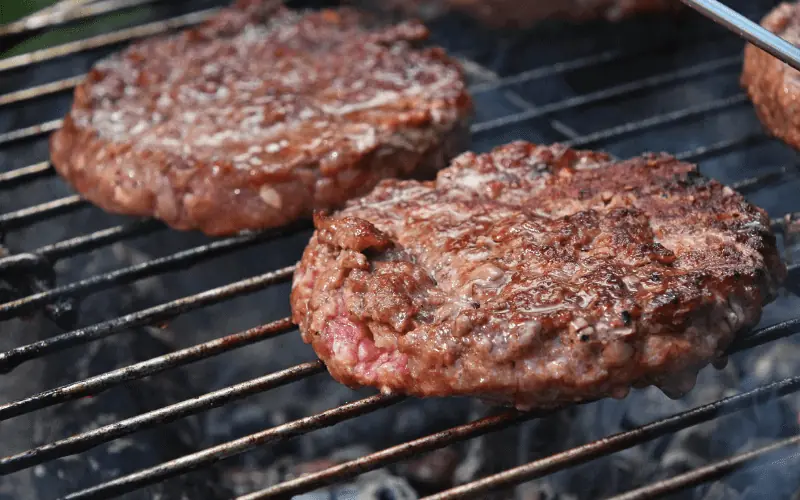
Hamburger Temperature FAQs
How Can You Avoid Food Poisoning When Working with Ground Meat?
Like other types of meat, it is essential to follow proper food handling precautions when working with ground beef. This is because just the act of handling ground beef can cause harmful contaminants to spread to other surfaces.
Check out these food handling safety tips for when you are working with ground beef:
- Keep the surfaces of your kitchen clean both before and after handling ground beef and other foods
- Store your ground beef in the refrigerator and out of the danger zone until you are ready to prepare it for cooking
- Wash your hands before and after handling raw meat of any kind
- Use different work surfaces for raw meat
- Store your ground beef away from other foods such as produce when it is in the refrigerator
While this is not an exhaustive list of safety precautions, it should give you a great start to protecting yourself and others from harmful bacteria. Taking certain precautions means that you and your family are at a lower risk of food contamination that can cause certain illnesses.
How Do You Know When Your Hamburgers Have Reached the Correct Temperature?
One of the most difficult parts of cooking hamburgers and other foods is ensuring that you are reaching the proper temperatures. This is mostly because hamburgers tend to cook at a faster pace than other types of meats.
Knowing whether your hamburgers are safe to consume typically means that you are going to have to use a meat thermometer. This is the only surefire way to make sure that the internal temperature has reached the recommended levels.
If you do not own a meat thermometer, you may want to consider purchasing one just to be sure that you have cooked your burgers to perfection. This will go a long way to keeping you and your guests safe from food poisoning.
Although the recommended temperature can be adjusted some, it is important that you only do so if you are planning to grind the meat yourself. If you purchase prepackaged meat, you should have your meat thermometer ready to ensure the temperature guidelines are met.
The bottom line in knowing when your hamburgers are at the appropriate temperature is that you can only be sure if you are checking the internal temperature. This can only be done by using a thermometer that is specifically designed for meat.
Is 145 Degrees Safe For Burgers?
145 degrees is safe for burgers if you’re using hamburger meat you ground yourself or if you bring the temperature to 145 and hold it at that temperature for ~12 minutes.
This is based on 2 things:
- In the book “Cooking for Geeks” by Jeff Potter explains: “…if you have a way of cooking your burger to a lower temperature and then holding it at temperature long enough to pasteurize it, you could avoid denaturing the actin proteins while still pasteurizing the meat.”
- Ground beef is only recommended by the USDA to be cooked to 160 degrees because the outer surface of the meat may have been exposed to harmful bacteria and then mixed in during the process. By doing it at home in a safe environment, you can prevent that.
Those are too nerdy ways of saying, “you can…if you know what you’re doing.” 🤓
Do Burgers Have To Be 160 Degrees?
If you play by the rules of the USDA, then yes, your burgers have to be cooked to 160 degrees Fahrenheit.
As you can see in the FAQ about this one, you can cook your burgers and not give yourself or your guests a trip to the bathroom (🤢) if you know what you’re doing.
Does Grinding Your Meat Affect the Freshness Quality of Ground Beef?
It is important to remember that most of the safety precautions concerning temperature guidelines are directly related to prepackaged ground beef. This is because you cannot be sure of where the source of the meat came from.
Grinding your beef gives you the luxury of knowing that your meat has come from a single cow instead of multiple. In addition, since a whole cut of beef typically only contains bacteria that live on the surface, you can be sure that when you grind it, bacteria will not be difficult to eliminate.
Since you know where your beef comes from when you choose to grind your ground beef, you have the luxury of adjusting the cooking temperatures. This means that if you prefer a medium-rare burger, you can do so without the higher risks of contamination.
What’s the Best Method for Cooking Burgers?
In addition to the preferences people have for the temperature of their hamburger, there are also various preferences for the methods of cooking the perfect burger as well. This can include everything from the way it is seasoned to the method of cooking it.
We recommend always seasoning a burger before it is cooked, especially if you ground the meat yourself. The truth is, hamburger meat doesn’t have much flavor on its own and a little salt and pepper can go a long way!
We also recommend that you cook your burger on the grill, after all, it’s the best way to add flavor to meat! Cooking burgers on a charcoal grill is our favorite, as the charcoal flavor mixed with the hamburger meat can’t be beat. But we also recommend cooking burgers on your pellet grill, especially if it has the ability sear.
If you don’t have a grill yet, your skillet will do, but you’ll need to season your burger a little more in this case to bring out the flavors of the meat!
Before You Go…
Making your burger patties is fun and part of the process, but grilling them when frozen is a little different. Here are our tips for grilling frozen burgers.

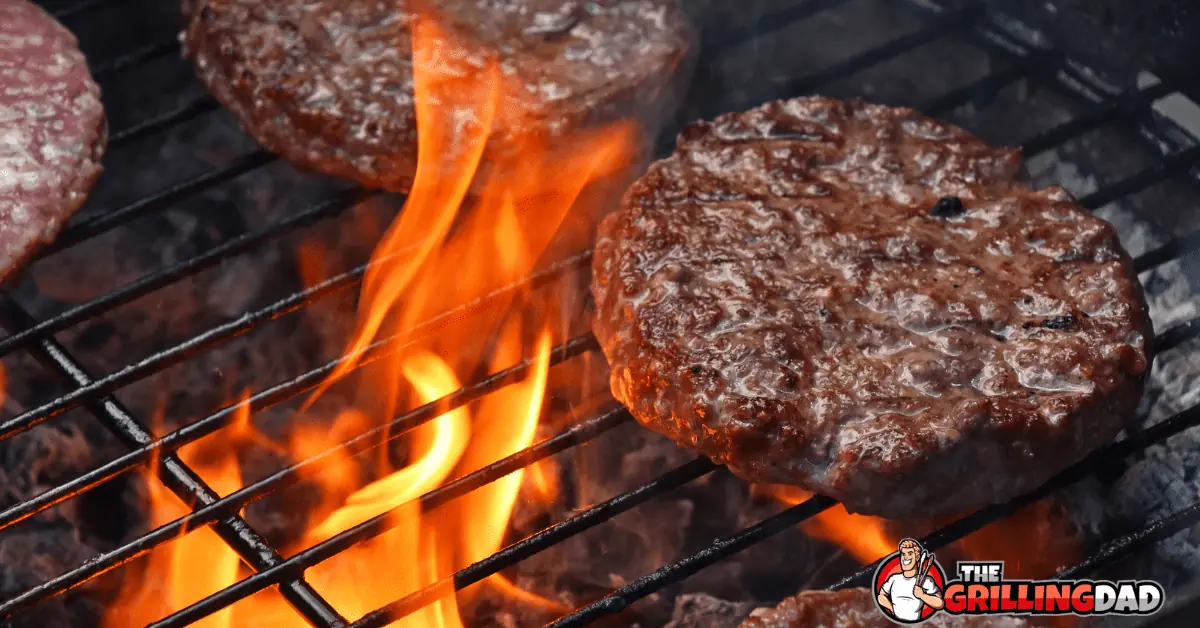



Could you add approximate times for hamburger to get to temperature if frozen and if cold from refrigerator but never frozen?
With the hamburger temperature chart posted what temperature do you set the grill. Thanks
Medium to medium high. Great question! If you have a meat thermometer, that also takes the guessing out of when they’re done. If you don’t, my shortcut (for 0.5″ thick burger) is about 4 min on each side